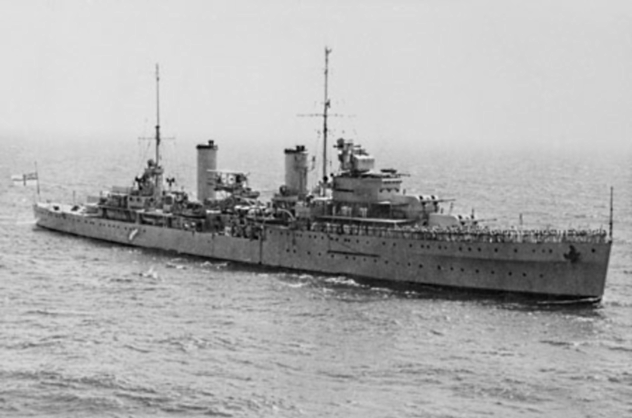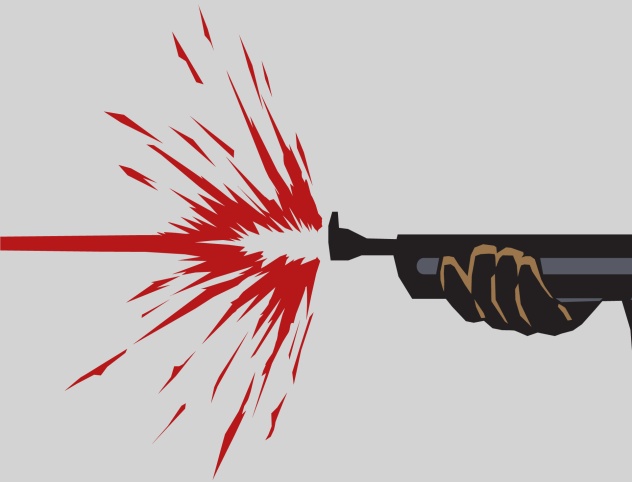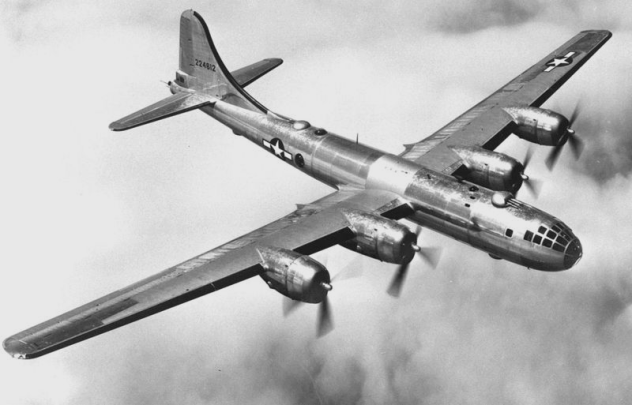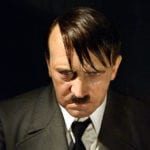 Technology
Technology  Technology
Technology  Our World
Our World 10 Ways Icelandic Culture Makes Other Countries Look Boring
 Misconceptions
Misconceptions 10 Common Misconceptions About the Victorian Era
 Mysteries
Mysteries 10 Strange Unexplained Mysteries of 2025
 Miscellaneous
Miscellaneous 10 of History’s Most Bell-Ringing Finishing Moves
 History
History 10 Great Escapes That Ended Right Back in Captivity
 Weird Stuff
Weird Stuff 10 Fascinating Things You Might Not Know About Spiders
 Food
Food 10 Everyday Foods You Didn’t Know Were Invented by the U.S. Military
 History
History 10 Odd Things Colonial Americans Kept at Home
 Weird Stuff
Weird Stuff 10 Superstitious Beliefs That Once Consumed Entire Cultures
 Technology
Technology 10 Scientific Breakthroughs of 2025 That’ll Change Everything
 Our World
Our World 10 Ways Icelandic Culture Makes Other Countries Look Boring
 Misconceptions
Misconceptions 10 Common Misconceptions About the Victorian Era
Who's Behind Listverse?

Jamie Frater
Head Editor
Jamie founded Listverse due to an insatiable desire to share fascinating, obscure, and bizarre facts. He has been a guest speaker on numerous national radio and television stations and is a five time published author.
More About Us Mysteries
Mysteries 10 Strange Unexplained Mysteries of 2025
 Miscellaneous
Miscellaneous 10 of History’s Most Bell-Ringing Finishing Moves
 History
History 10 Great Escapes That Ended Right Back in Captivity
 Weird Stuff
Weird Stuff 10 Fascinating Things You Might Not Know About Spiders
 Food
Food 10 Everyday Foods You Didn’t Know Were Invented by the U.S. Military
 History
History 10 Odd Things Colonial Americans Kept at Home
 Weird Stuff
Weird Stuff 10 Superstitious Beliefs That Once Consumed Entire Cultures
10 Unanswered Questions From World War II
Aside from the visible tales of death and destruction, World War II left us with many mysteries and unanswered questions. While we have gotten to the bottom of several of these mysteries, many still remain unanswered and might not be getting answers anytime soon.
10 Who Put The D-Day Code Names And ‘Dieppe’ In A Crossword Puzzle?

The word “Dieppe” turned out to be one of the solutions to a crossword puzzle in Daily Telegraph newspapers in August 1942. This looks quite normal, until you realize that two days after the puzzle ran (and one day after its solution was given), Allied troops launched a deadly assault on the French port of Dieppe.
MI5, Britain’s intelligence service, spotted this but ignored it as a coincidence. Two years later, more puzzles appeared in the Daily Telegraph. This time, they had answers like “Utah,” “Overlord,” “Omaha,” “Mulberry,” and “Neptune,” all of which were directly related to the upcoming D-Day landings. The entire landing operation was called “Operation Overlord.” “Omaha” and “Utah” were code names for beaches that would be assaulted. “Mulberry” was the code name for the temporary harbors that were to be constructed after the assault, while “Neptune” was the code for the entire D-Day naval operation.
Leonard Dawe, a school principal who was also responsible for the Telegraph’s crossword puzzles, was detained and questioned about how he came across the codes. No one really knows how, since he refused to speak about his time in detention. In 1984, one of his former students named Ronald French revealed that Dawe used to make him and several others fill blank crossword puzzles. French was very familiar with the codes (since he often heard them from Allied troops camping close to the school), and might have filled them in, although he was not sure if he did. However, two years before French talked, another unnamed boy said that he put down the names. No one knows who the unnamed boy is. If he was truly responsible for the D-Day puzzles, who was responsible for the Dieppe puzzle? Was that instance truly just a coincidence?
9 Why Did Hitler Stop The German Army From Decimating The Allies At Dunkirk?

After France’s swift and surprising fall during World War II, what remained of the French Army, along with British and Belgian troops, retreated from the mainland to the port of Dunkirk. With the ocean behind them and the Germans coming from the opposite direction, the Allies were truly between the Devil and the deep blue sea. Just before the Germans could launch an assault and reduce the thousands of Allied forces at the beach to nothing, Hitler ordered them to stand down and for the next three days. The German forces looked on as the Allies were evacuated with boats, ships, yachts, and anything else that could sail.
Why did Hitler order the German assault force to stand down? An assault on the Allied troops at Dunkirk would have had an unforgettable effect on the war. It would have dealt a serious blow to the British army and led to the complete defeat of the French army. Before he committed suicide, Hitler said that the order was a “sporting gesture,” meant to lure England into talks with Germany so they could end the war. Many dispute this, however. They believe that Hitler had a bitter rivalry with his generals and was trying to show them that it was he who decided where, when, and how German troops fought.
Others believe that Hitler was surprised by the swift fall of France, and he feared the retreat to Dunkirk was a trap. He might also have wished to prevent his tanks from moving into the unfavorable terrain, or maybe he simply wanted to give the German air force the pleasure of finishing the Allies.
8 Who Read Winston Churchill’s Speeches On BBC?
Due to technological constraints, British Broadcasting Corporation (BBC) radio was unable to record or air Winston Churchill’s speeches directly from the House of Commons. Churchill was required to go over to their station to repeat his speeches. Since he was probably too busy to do so, an actor was hired to do it.
The actor in question was Norman Shelley, who claimed that he read several of Winston Churchill’s speeches, including the famous and morale-boosting “We Shall Fight Them on the Beaches” and “Their Finest Hour.” He claimed he was so good at mimicking Churchill’s voice on radio that Churchill himself congratulated him. Members of Churchill’s camp, however, dispute this. They insist that Churchill read his speeches himself. Besides, if the BBC was going to get someone to repeat the speeches on radio, they would most probably have used one of their staff and not a paid actor.
Supporters of both camps have been debating this issue for some time. We don’t know who to believe, and the discovery of a September 1942 record titled “BBC, Churchill: Speech. Artist Norman Shelley” simply complicated issues and raised flags on both sides.
7 Where Is Rommel’s Gold?

German troops fleeing North Africa after defeat by Allied forces were known to have gotten away with about 200 kilograms (400 lb) of gold, referred to as “Rommel’s gold” after German field marshal Erwin Rommel. It was stolen from Jews in Tunisia and kept in six hardened steel boxes. There are three major theories as to what happened to the gold: It was either hidden somewhere in the vast deserts of North Africa, sent to Germany (although it never got there), or deliberately sunk somewhere off the coast of Corsica, a French island in the Mediterranean Sea. The most probable theory is that it was deliberately sunk off Corsica with plans to retrieve it later.
Several attempts (spanning decades) to retrieve the gold have so far been futile, although one man who has been going after it for 15 years claimed that he had an idea of its location. Anyone who finds the gold would be required to share it with the French government, which would try to look for relatives of the owners.
6 What Happened To The HMAS Sydney‘s Crew?

The November 1941 sinking of Her Majesty’s Australia Ship (HMAS) Sydney by the German ship HSK Kormoran was a big blow to the Australian government. It was so mysterious, surprising, and shocking that the Australian government forbade any media house from reporting the incident for almost two weeks.
The whole mystery began on November 19, 1941, when the Sydney spotted an unidentified ship several hundred miles from Perth, Australia. The Sydney gave chase and ordered the anonymous ship to identify itself. The unidentified ship raised a flag indicating it was a Dutch merchant ship. As the Sydney got closer (too close actually), the “merchant ship” lowered its Dutch flag and raised a German flag. As it turned out, it was a German warship called the HSK Kormoran.
Not surprisingly, a naval battle began, with both ships engaging with torpedoes, machine guns, and every other weapon they had onboard. The Kormoran damaged the Sydney’s guns, turret, bridge, tower, and bow. The Sydney, in return, damaged the Kormoran’s engine, effectively rendering it immobile. In time, both ships were on fire. The Kormoran’s crew abandoned their ship when their fire became unbearable, but the same could not be said of the Sydney’s crew, who turned their burning ship and sailed away from the scene. The 645-man crew was never seen again.
Nine days after the ship and its crew went missing, one of its lifeboats was found at sea by another Australian warship. Another lifeboat was also found in Queensland, and a third was found with the decomposed body of a sailor three months later.
5 What Happened To Heinrich Mueller?

Heinrich Mueller was a top Nazi officer and commander of the Gestapo. Often called “Gestapo Mueller” to differentiate him from another Nazi commander of the same name, he ran spy rings for the Nazi government, was a leading figure in the Holocaust, and remains the only high-ranking Nazi official whose fate is still a mystery.
Whether he died, escaped, or was killed in captivity—or deliberately freed to become a spy for the CIA or the Soviet Union—is one question that remains unanswered. There were initially speculations that he died and was buried in a grave in Berlin. The grave in question was exhumed, and the remains were found to be of two unknown soldiers and not Mueller’s. Adolf Eichmann, another top Nazi commander who was arrested in 1960, said that he believed Mueller had survived.
The CIA, however, made it clear that it never came across “Gestapo Mueller,” although the Allies did come across several Heinrich Muellers. As it turned out, “Heinrich Mueller” was a very popular and common name in Germany. Most of these Heinrich Muellers had no middle name, so it was not unusual for their files to get mixed up.
The last confirmed record of Mueller is from the day after Hitler committed suicide, when Mueller refused to escape with other Nazi forces as the Red Army advanced toward Berlin. He said that he was ready to fall with the regime and would never allow himself to be captured by the Russians.
According to German historian Professor Johannes Tuchel, Heinrich Mueller died in 1945 and was buried at the German air force headquarters before he was finally moved to a Jewish cemetery in Berlin that contained several mass graves. However, we won’t be finding out anytime soon if Mueller was actually buried there, as Jewish law strictly prohibits exhumation of buried corpses.
4 What Was The I-52‘s Mission?
The I-52 was an advanced submarine used by Japan during World War II. It was sunk in the Atlantic ocean by an Allied airplane on the night of June 23, 1944. Onboard the submarine were 112 crewmen, some German scientists operating a Wehrmacht Enigma encoding machine, at least 2 tons of gold, 250 tons of tin, and 44 tons of rubber. There were also several tons of opium, tungsten, molybdenum, magnesium, and quinine.
Considering the high quantity of crucial war supplies onboard, many believe that the submarine was transporting them to the German government in exchange for German military technology. Others believe that it was carrying a peace proposal between the United States and Japan. Declassified World War II military documents revealed that Yoshikazu Fujimura, Japan’s naval attache to Switzerland (who had been in talks with the United States), intended to meet with the submarine to collect a peace proposal.
3 Who Ordered The Killing Of Communists And Left-Wing Resistance Members In The Netherlands?

Several communists and left-wing resistance members in the Netherlands were rounded up and killed by Nazi troops during the German occupation of Switzerland. Another resistance fighter, Hannie Schaft, was shot and killed less than a month before Germany retreated from the Netherlands. The killings, which took place in Velser, the Netherlands, are known today as the “Velser Affair.” So mysterious and deadly was the case that all previous investigations into it have met a brick wall.
Several investigations have been canceled, and people investigating it have been killed. A journalist who often wrote about it after the war was threatened with death. No one talks about it. People living in Velser would often tell anyone who wishes to live long to keep quiet about the affair. Many, however, believe that snitch operations were carried out by members of the Velser police force, who were also leading figures in the Dutch Resistance. The murky mystery remains unsolved, and a foundation called SOVA (Steun Onderzoek Velser Affaire) has been specifically formed to solve the mystery.
2 What Happened To The B-29 That Crashed Over Itasca County?

On July 14, 1945, a B-29 bomber airplane piloted by pilot Edward Szycher took off from Texas to Duluth on a training mission. The plane completed its mission and was on a return trip to Texas when the smell of gasoline suddenly overwhelmed its crew as they transferred fuel between its tanks. The crew attempted to open the bomb bay doors to dump some of the fuel, but the doors wouldn’t open. They didn’t send any mayday call because they feared that operating the radio might ignite the fuel. The crew had to abandon the airplane after the fuel began to negatively affect them; their hands and legs were becoming weak. The flight engineer was already unconscious and had to be carried out of the airplane by other crew members.
The pilot switched on the automatic pilot and put the airplane on a course toward Montana before bailing out with the rest of the crew. The men had never bailed out of an airplane before, yet they still managed to get to the ground, dropping safely into several fields and lakes in Itasca County, Minnesota, with only two people suffering injuries. The airplane was never seen again.
Two people reported seeing the airplane crashing into a lake, and there are also speculations that it might have blown up or passed over the country and crashed into the Pacific Ocean. Another pilot had initially refused to fly the airplane because it smelled of gasoline. However, the crash seems to have been covered up by the government, and the fate of the airplane remains unknown.
1 Who Set A Bomb At The British Pavilion in 1940?

On July 4, 1940, New York Police Department detectives Ferdinand Socha and Joseph Lynch were called to the British pavilion at the World Trade Fair to inspect a suspicious-looking bag that was making a clock-like sound. The two men got to the scene and carried the bag to a safe corner, where they attempted to inspect its contents. Lynch cut a small hole in its side and found that it contained dynamite with an attached timing device. The bomb exploded soon after, killing Socha and Lynch and injuring four other detectives, one of whom lost an eye.
No one knows who was responsible for the bomb, which left a crater 1.5 meters (5 ft) wide and 1 meter (3 ft) deep. An impressive reward of $26,000 (about $500,000 in today’s money) was offered to anyone who could solve it. Suspects included the German Bund (a US fascist group), the Irish Republican Army (IRA), several communist groups, the Christian Front, and the British government.
The British government is considered a suspect due to speculations that they might have carried out the bombing to make it look like it was the handiwork of the Germans. This would have forced the United States into the war and turned them against Germany. The area in which the bomb was found was closed to the public, and only members of the British government could have accessed it. The bombing remains unsolved.








